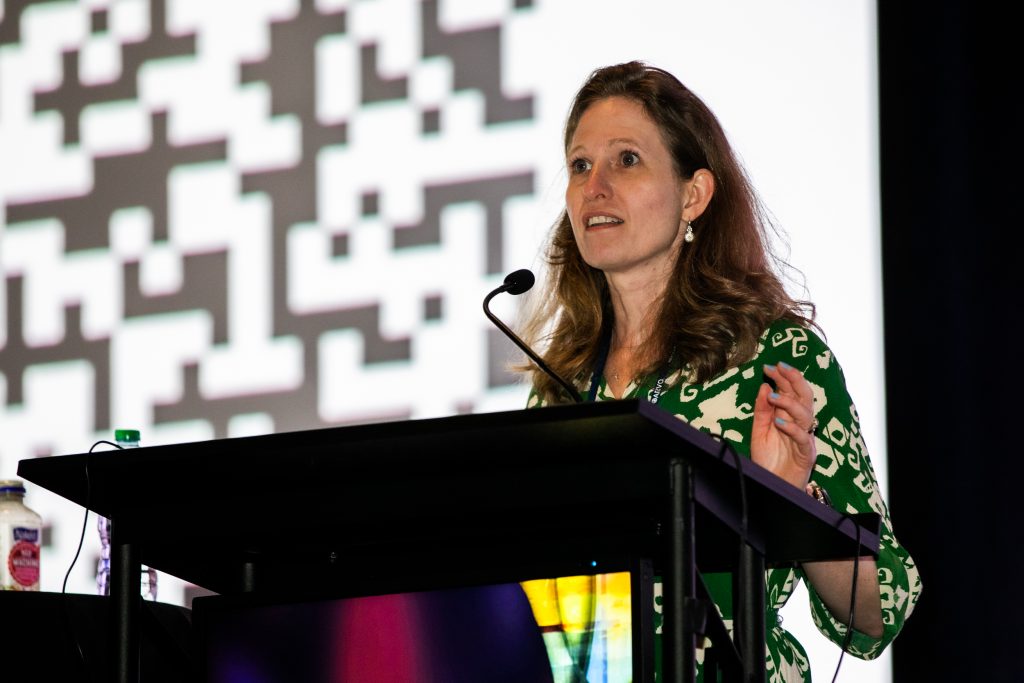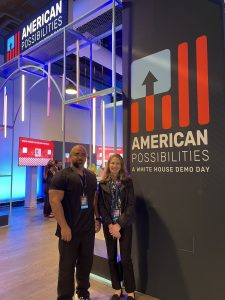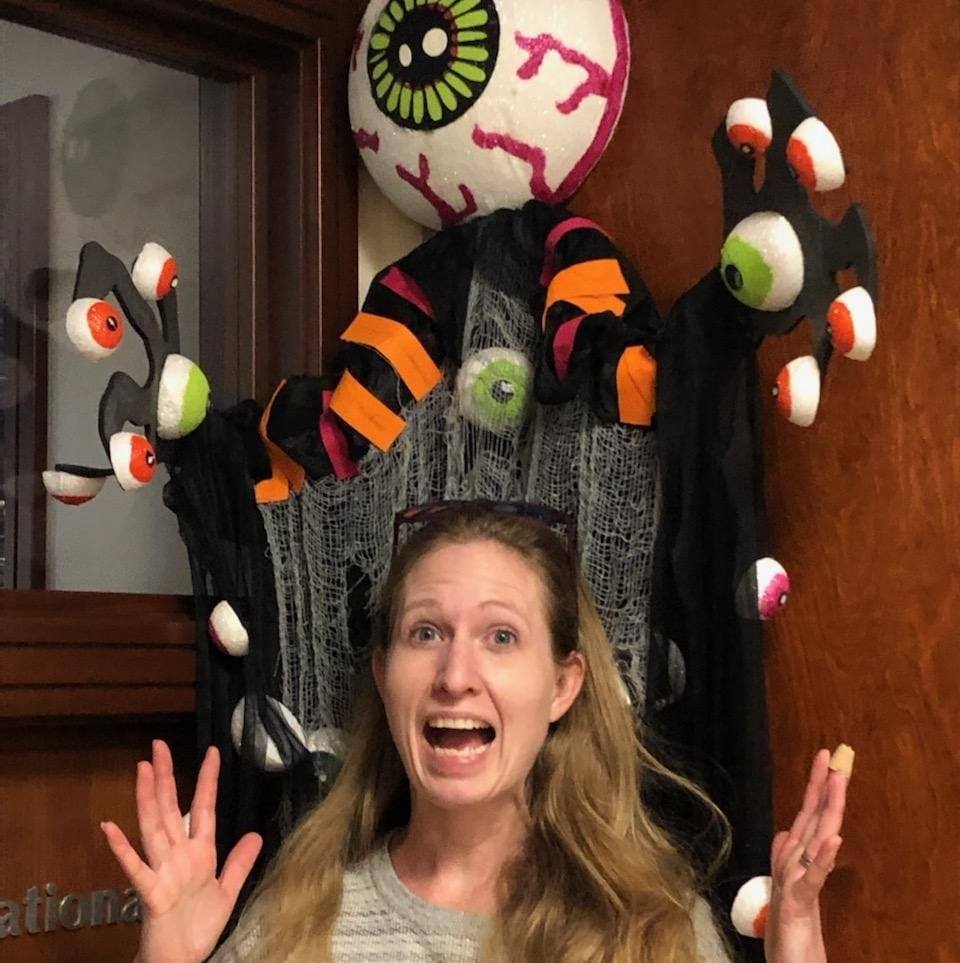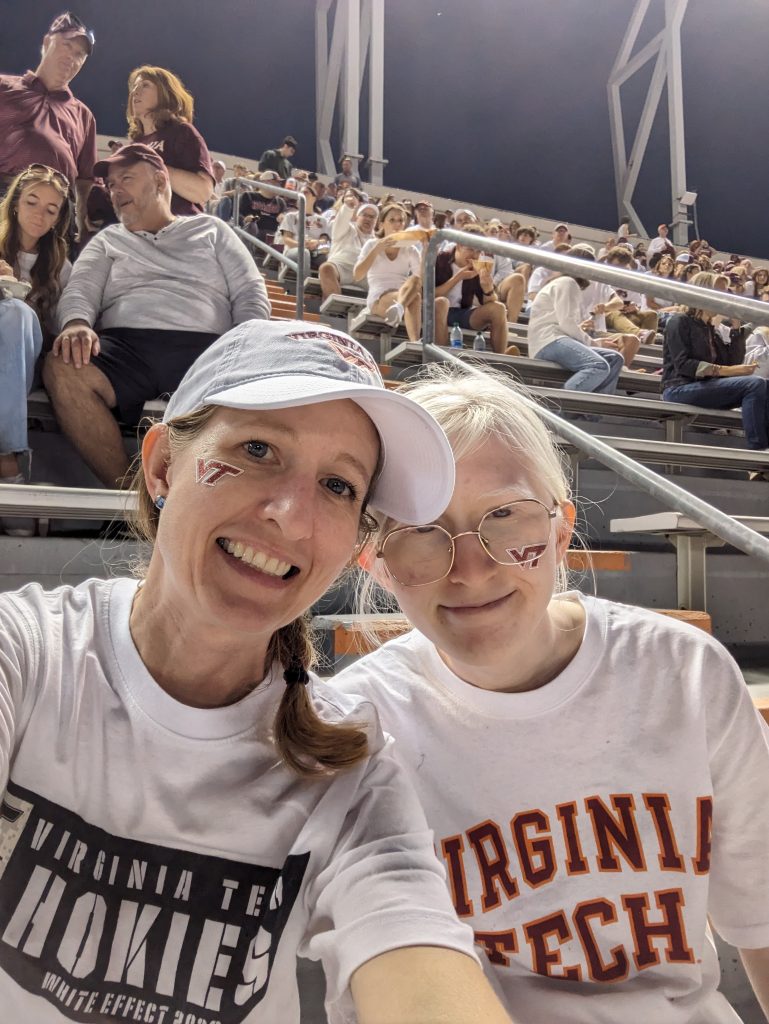- Who We Are
- Updates & News
- Standards
- Software Tools
- Network Studies
- Community Forums
- Education
- New To OHDSI?
- Community Calls
- Past Events
- Workgroups
- Tutorials
- 2025 ‘Our Journey’ Annual Report
- Current Events
- Support & Sponsorship
- 2025 Global Symposium
- 2025 APAC Symposium
- 2026 Global Symposium
- Github
- YouTube
- X/Twitter
- Newsletters
Collaborator Spotlight: Kerry Goetz
Kerry Goetz is the Associate Director for the National Eye Institute’s Office of Data Science and Health Informatics at the US National Institutes of Health. In this capacity she is responsible for advancing data management and sharing strategies to make NEI data FAIR (Fully AI-Ready & Findable, Accessible, Interoperable, and Reusable). For over a decade, Kerry has been leading the eyeGENE Program, a controlled access resource with imaging, data, samples, and a participant registry for rare eye conditions. Kerry has also been entrenched in standards development for over 15 years.
Kerry co-leads the Eye Care and Vision Research Observational Health Data Sciences and Informatics Working Group, is a member of the American Academy of Ophthalmology Standards Working Group, and also works to aligning imaging standards and health data to enable groundbreaking research. She has been

attending OHDSI meetings for many years but didn’t know how to truly get connected since she didn’t have access to any OMOP’d data. The NIH clinical center operates in a much different capacity. However, after connecting with other like-minded collaborators like Sally Baxter and Michelle Hribar, there was momentum to create a Eye Care and Vision Health Working Group.
In Kerry’s spare time, she enjoys traveling, snowboarding, camping, hiking, and biking and spending time with family, her two collies, or her Girl Scout Troop. She is also a PhD Candidate at George Mason University, studying Health Services Research with a Knowledge Discovery and Health Informatics Concentration. She discusses her career journey, evidence gaps around vision research, how OHDSI impacts her PhD journey, and more in the latest collaborator spotlight.
Can you discuss your career journey and your major research focuses?
That’s a long story but I found my way to health data and informatics through working on a rare eye disease research initiative at the National Eye Institute, at the NIH, called eyeGENE. This was a project collecting phenotypes and genotypes for 6,400 participants with over 30 different inherited eye conditions. My job was to enable research use, and I quickly realized that a lack of standardization was going to hinder the opportunities for knowledge generation. From there I met Clem McDonald, a pioneer in medical informatics, and really found my calling. My passion for data management and sharing, especially around clinical data standards, has led me to a leadership role in the NEI as the Associate Director of the Office of Data Science and Health Informatics. This is a very exciting role for me because I have a platform to share success stories and garner more support for interoperability and informatics through research and policy making. Most of my research focuses on imaging, AI, and observational health and I’m very interested in how clinical research can better align with a person’s health care experience.
How did you learn about the OHDSI community, and what has inspired you to take such an active role in it?
I have a lot of collaborators at the National Library of Medicine who introduced me to OHDSI. I attended many of the meetings hosted in Bethesda. I recall one meeting where I was taking a causal inference class for my PhD and was delighted to show up and see the room plastered with propensity score matching posters. I knew I had found my community! It was a few more years before I found like-minded collaborators in the vision community who would join forces in a eye specific component of the journey.
You, Sally Baxter and Michelle Hribar co-lead the new Eyecare & Vision Research workgroup. Can you share some of the evidence gaps around vision research that you believe can be filled through observational research?
 Sally and Michelle are really the drivers behind this and I’m happy to call them close collaborators and friends. There are so many open questions about eye health care due to it being a little behind other domains in the use of source vocabularies. Eye care is heavily reliant on text notes and imaging. I’m very excited to bring imaging and observational data together so that we can advance care. Because the eye is easy to image quickly and non-invasively, it presents an amazing tool for understanding all sorts of health characteristics, biomarkers, and risk factors. Ocular imaging has been shown to be very effective in predicating an innumerable number of conditions from Alzheimer’s to Autism, to Parkinson’s, and biological age (as opposed to chronological age). Bringing the medical imaging table to the OMOP CDM will enable a lot of opportunity. I was actually sharing that potential at a White House event in November and President Biden attended (see photo, right). I called the event an adult science fair with the President as judge.
Sally and Michelle are really the drivers behind this and I’m happy to call them close collaborators and friends. There are so many open questions about eye health care due to it being a little behind other domains in the use of source vocabularies. Eye care is heavily reliant on text notes and imaging. I’m very excited to bring imaging and observational data together so that we can advance care. Because the eye is easy to image quickly and non-invasively, it presents an amazing tool for understanding all sorts of health characteristics, biomarkers, and risk factors. Ocular imaging has been shown to be very effective in predicating an innumerable number of conditions from Alzheimer’s to Autism, to Parkinson’s, and biological age (as opposed to chronological age). Bringing the medical imaging table to the OMOP CDM will enable a lot of opportunity. I was actually sharing that potential at a White House event in November and President Biden attended (see photo, right). I called the event an adult science fair with the President as judge.
I’m also interested to explore care and services for people with visual impairments, how self-reported disability status relates to the medical representation of disability, and how to expose ableism in this space.
You are a PhD candidate at George Mason University, so can you discuss how OHDSI impacts your PhD journey?
OHDSI has been amazing for giving me ideas on what to work on throughout my PhD journey, including class projects and my thesis. I have floated in and out of several working groups to see where there might be potential project ideas or mentors for my research. As an informatics student, one of the huge barriers is access to a source of significant data that is fit for purpose. The OHDSI community is a great resource and is very collaborative, which is perfect for students. I share about OHDSI with as many students that I can.
What are some of your hobbies, and what is one interesting thing that most community members might not know about you?
Since I’m trying to get a PhD and working on so many inspiring projects for my day job, I try to not get into too many hobbies, but I do enjoy leading a girl scout troop of 16 sixth graders, camping, hiking, and reading for fun. One interesting thing about me is that I grew up in the Appalachian Mountains in a town called Accident, population 350!


